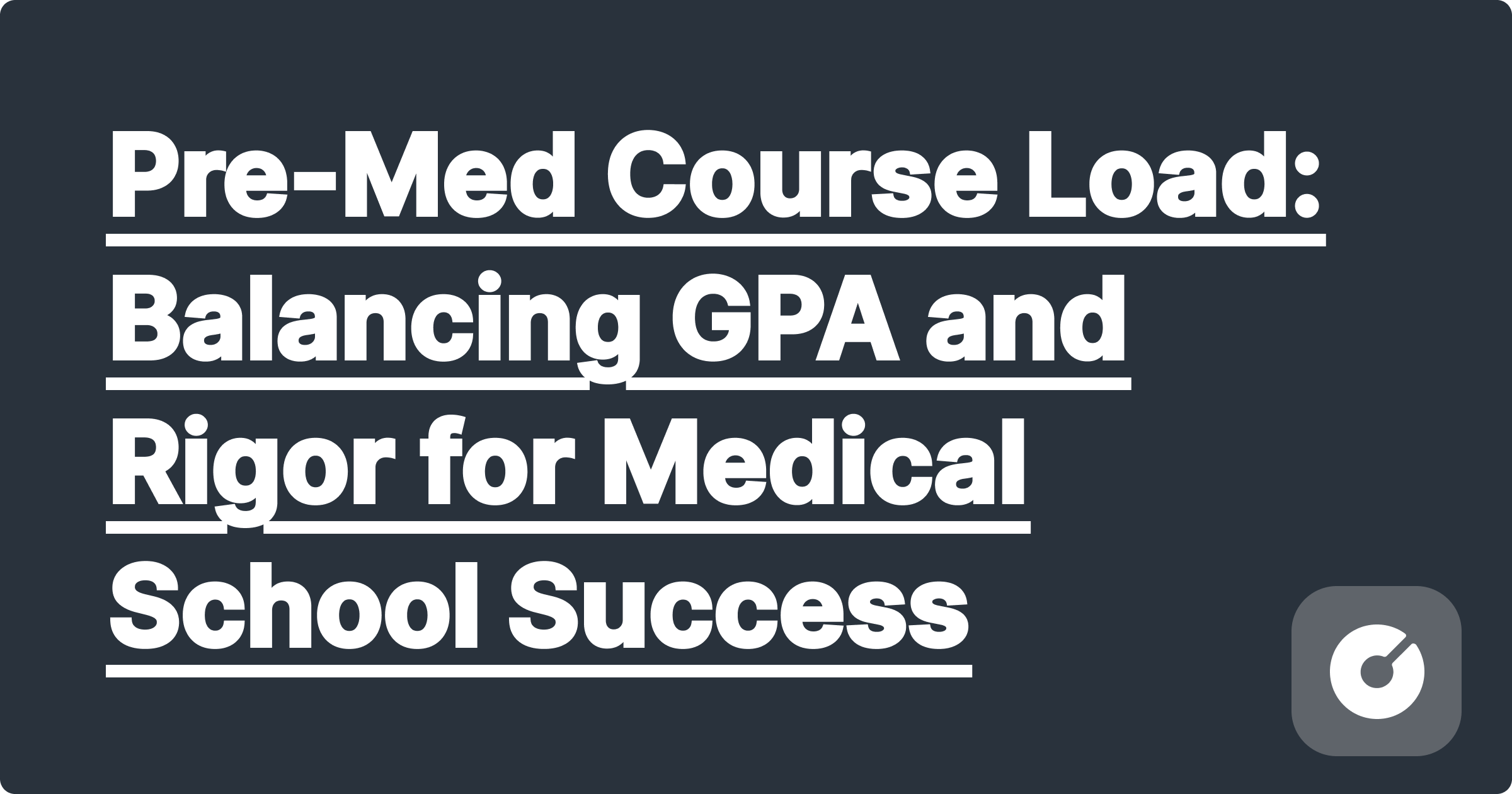
The journey to becoming a physician is a marathon, not a sprint. Pre-med coursework is notoriously challenging, demanding not only exceptional academic prowess but also meticulous time management and unwavering dedication. This comprehensive guide helps you navigate the complexities of a pre-med course load, focusing on strategies to maintain a high GPA while tackling the rigorous demands of the curriculum. We'll delve into course selection, financial considerations, and effective study techniques to set you on the path to medical school acceptance.
While the core sciences – biology, chemistry (organic, inorganic, physical), and physics – form the bedrock of your pre-med education, the requirements extend beyond these foundational subjects. Most medical schools also require coursework in mathematics (often calculus), English composition, and often a selection of humanities or social sciences. The specific requirements vary between schools, so it's crucial to research your target medical schools early in your undergraduate career.
Example Course Load: A typical pre-med student might take the following courses in a single semester: Organic Chemistry I, General Biology II, Calculus I, and an English Composition course. This demanding schedule necessitates efficient time management and effective study habits.
Your GPA is arguably the most critical factor in medical school admissions. While the MCAT score carries significant weight, a strong GPA demonstrates consistent academic excellence and the ability to handle the rigor of a demanding curriculum. The average GPA of matriculants varies by medical school but generally falls within the 3.7-3.9 range. This statistic underscores the importance of achieving top marks consistently throughout your undergraduate studies. Note that this data is dynamic, and it’s recommended to check the AAMC website for the most current statistics by year.
(Note: 2024 data on average GPAs for accepted medical school students is not readily available in a centralized, publicly accessible database as of October 26, 2023. The range provided above represents a general trend observed in previous years. Always consult the specific medical school's website for the most current information.)
The cost of a pre-med education is substantial. Tuition fees, textbooks, laboratory fees, and other expenses can quickly add up. Depending on your institution (public vs. private), you could expect to pay anywhere from $10,000 to $60,000 or more per year. This doesn't include living expenses, which can add another significant cost.
Financial Aid and Scholarships: Explore all available financial aid options, including federal grants, scholarships, and loans. Many organizations offer scholarships specifically for pre-med students. Researching and applying for these scholarships can significantly reduce the overall financial burden.
Effective time management is paramount. Pre-med students often juggle demanding coursework, extracurricular activities (crucial for medical school applications), volunteer work, and social life. Here are some proven strategies:
Create a realistic schedule: Plan your study time, incorporating breaks and time for other activities.
Prioritize tasks: Focus on the most important assignments and deadlines first.
Utilize time-blocking techniques: Allocate specific blocks of time for specific tasks.
Learn to say no: Don't overcommit yourself. Focus on activities that genuinely benefit your application.
Effective study techniques can dramatically improve your academic performance. Consider these approaches:
Active recall: Test yourself frequently on the material.
Spaced repetition: Review material at increasing intervals.
Form study groups: Collaborate with classmates to reinforce learning.
Seek help when needed: Don't hesitate to ask professors or teaching assistants for clarification.
The choice of university significantly impacts your pre-med journey. Consider the following factors:
Acceptance rates of medical schools: Research the success rate of the university in placing students in medical schools.
Average MCAT and GPA of accepted students: Aim for a university with a strong pre-med program that aligns with your academic profile.
* Faculty support and mentorship: Look for universities that offer robust pre-med advising and mentorship programs.
(Note: Providing specific acceptance rates and average MCAT/GPA scores for individual universities requires extensive research across numerous institutions and would be impractical within the scope of this blog post. You can access this data directly from each university's website or through resources like the AAMC.)
Sarah, a highly motivated pre-med student, meticulously planned her coursework, utilizing time-blocking techniques and forming study groups. She actively sought mentorship from professors, consistently participating in office hours. Her dedication resulted in a 3.9 GPA and a stellar MCAT score, securing her acceptance into her top-choice medical school.
Medical schools value well-rounded individuals. Engage in extracurricular activities that demonstrate leadership, teamwork, and commitment to service. These activities can include volunteering at hospitals, participating in research, or joining relevant clubs and organizations.
The pre-med journey is demanding, but with meticulous planning, effective study strategies, and a commitment to excellence, you can achieve your goal of medical school acceptance. Remember to prioritize your well-being, seek support when needed, and remain focused on your aspirations. By following the advice outlined in this guide, you'll significantly increase your chances of success in this challenging yet rewarding endeavor. Start planning early, research thoroughly, and consistently strive for excellence – your future as a physician awaits.
Second Career Medical Students: Changing Paths to a Rewarding Career
Foreign Medical Schools for US Students: A Comprehensive Guide for 2024 and Beyond
Osteopathic Medicine: Growing Acceptance and Benefits for Aspiring Physicians
Joint Degree Programs: MD/MBA, MD/JD, MD/MPH – Your Path to a Multifaceted Career in Medicine
Balancing Relationships During Medical School: A Guide for Pre-Med Students
Online Pre-Med Courses: Which Ones Count Towards Medical School Admission?
Medical School Prerequisites 2024: The Complete Course List & Guide to Success
Yale Pre-Med Requirements and Medical School Acceptance Rates: Your Comprehensive Guide to Success
Physician Assistant vs. Medical School: A 2024 Decision Guide for Pre-Med Students